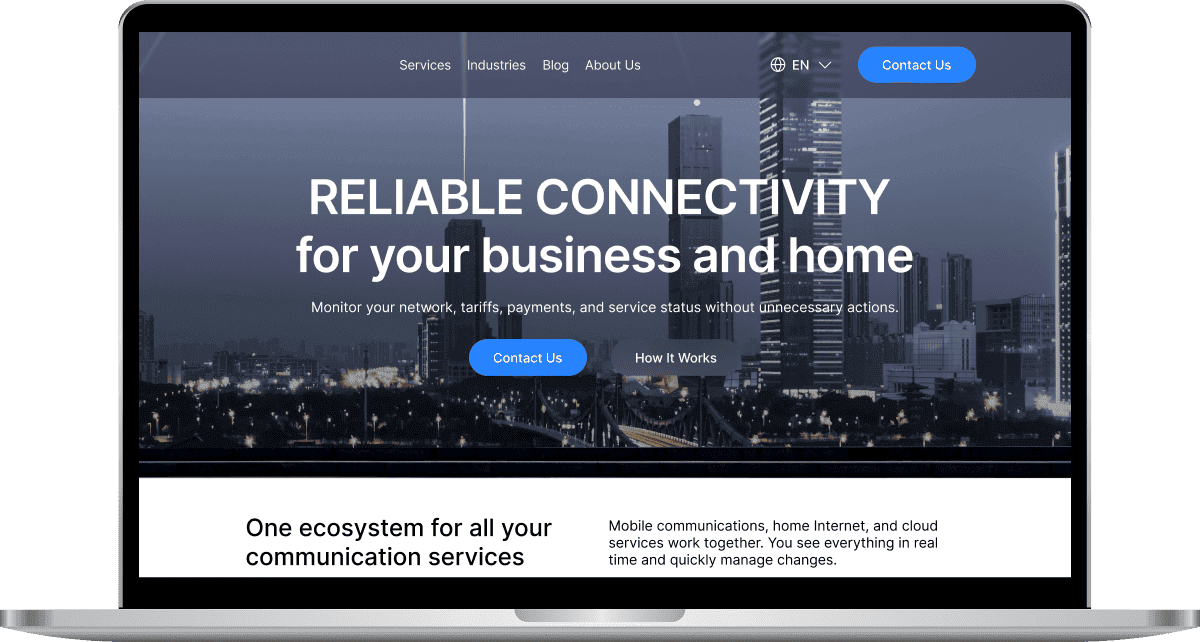- Home
- Case Studies
- Enhanced Quality Assurance for LaVista
Jul 27, 2023 3 min read
Enhanced Quality Assurance for LaVista
Platforms:
Web and MobileCountry:
UAEImplementation time:
Nov 2022 - Feb 2023
Subscribe to Our Newsletter
Stay tuned for useful articles, cases and exclusive offers from Luxe Quality!
About Company
LaVista is an e-commerce company that makes online shopping fast and convenient with the help of web and mobile applications. The company offers women, men, and children a wide range of clothing and accessories.
Before
The project has already been released to the market. There was no proper testing process, so the developers fixed any bugs found.
Challenges and Solutions
Luxe Quality provided two QA engineers to create documentation, create test cases for manual testing and automate some of them on the next stage and then automate them, set up the testing process, create clear steps and templates for bug reports, improve the product management system, and ensure adaptive testing across devices and platforms.
We will share with you some aspects of the work on this project.
Challenges | Solutions |
|---|---|
The project went a long way before the release without testing, so many processes had to be revised | Testing and quality control setup with all the necessary systematization of requirements was done. A clear and structured testing process was established, which allowed for the effective detection and correction of errors |
Reporting and communication were carried out only through the company's internal ERP system | Gradually, after the work of Luxe Quality, the implementation of Google services was started to improve these processes |
In the customized system, there was no functionality available for creating bug reports | The layout of the page and the plan for its introduction into the system were developed. Later, the developers implemented the idea of this bug report page |
Test documentation was not created for the project | During the work on the project, a test plan, 300+ test cases, test suites, and templates for bug reports were created |
Technologies, Tools, and Approaches
JavaScript and the WebdriverIO framework were used to automate testing in this project. Automated testing was conducted exclusively for the web version, and manual testing was conducted for both the web and mobile versions. Functional testing was performed automatically, and usability, exploitability, and adaptability - manually using Android Studio emulators. GitHub Actions was used as CI/CD, and Allure was used for reporting.
Regression testing was performed weekly to identify potential problems and maintain product stability. Every day, regular reports were sent to the internal communication system. Autotests report was available on the GitHub Pages.
Results
- Over 400 bug reports: bug reports generated since the bug reporting system was improved show that many issues on the site have been found and fixed.
- A total of 490 tests were performed, 150 of which were automated: this comprehensive approach enabled efficient and thorough website functionality testing, ensuring potential issues were identified and resolved during development and in the future.
- Testing on CI was configured: testing starts automatically after changes in the code. This allows for quick bug detection and bug fixing. In this way, users will have the most positive experience possible.
- Flawless work: no complaints from users during 5 months of site operation.
- Usability testing was provided: thanks to these works, the interface's clarity and convenience were achieved. The correct user flow always helps to increase the conversion rate.
Implementation Steps
1. Onboarding
The onboarding process included communicating with the team, getting to know the requirements, setting the test goal, and studying the application in detail.
2. Tests Creating and Conducting
After getting acquainted with the project, work was started on creating test cases, and at the same time, exploratory testing was provided. The next stage was the creation and implementation of autotests. Smoke tests were conducted daily, and the results were delivered to the customer and developers.
3. Error reporting
During the daily tests, some bugs were discovered, documented, and forwarded to the development team for further correction. Each error was detailed with a template provided.
4. Tests support
After the test creation was completed, appropriate maintenance was ensured using the internal system and GitHub.
- Manual testing
- Functional testing
- Automation testing
- Usability testing
- UI/UX testing
- Exploratory testing
- JavaScript

- WebdriverIO

Your project could be next!
Ready to get started? Contact us to explore how we can work together.
Other Projects
Read moreDigital Connectivity Company
USA
•Web, Mobile
About project:
A digital connectivity company offering mobile, internet, and digital communication services.
Services:
- Manual and Automated testing, API, Security, Usability, Cross-browser, Cross-platform testing
- Automated testing -TypeScript + WebdriverIO + Mocha + Appium
Result:
350+ automated regression tests integrated into the CI/CD pipeline, ~50% fewer complaints from clients to support.FULL CASE STUDY
Telecommunications Provider
USA
•Web, Mobile
About project:
The client is a telecommunications provider offering broadband, mobile, and cloud communication services.
Services:
- Manual and Automated testing, API, Smoke, Regression, Performance, Security, Usability, Cross-platform testing
- Automated testing -TypeScript + WebdriverIO + Mocha + Appium
Result:
~70% of regression tests automated, reducing manual QA's involvement in regression cycles by 60%.FULL CASE STUDY
E-Commerce Retailer
USA
•Web, Mobile
About project:
An online E-commerce retailer that provides customers with a seamless online shopping experience through its web and mobile platforms.
Services:
- Manual and Automated testing, API, Usability, Cross-browser, Cross-platform testing
- Automated testing -TypeScript + WebdriverIO + Mocha + Appium
Result:
~80% drop in user-reported issues, critical checkout errors reduced to near zero, predictable, on-time releases for all major updates.FULL CASE STUDY



